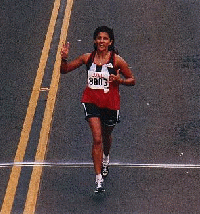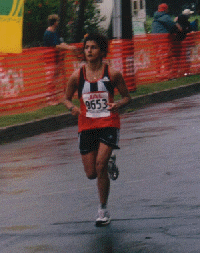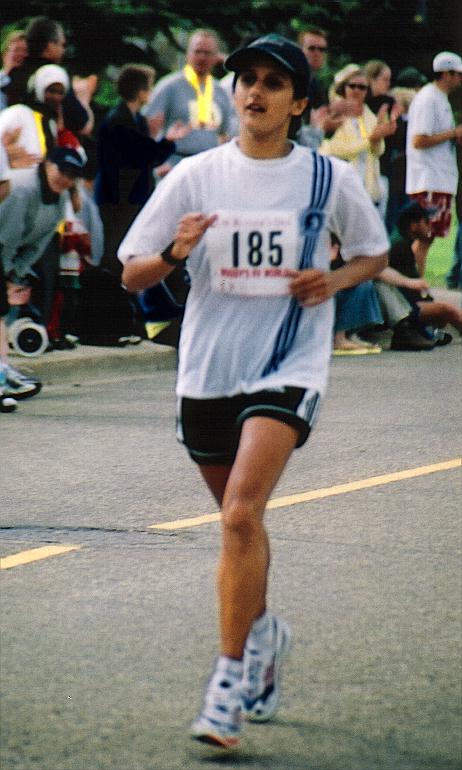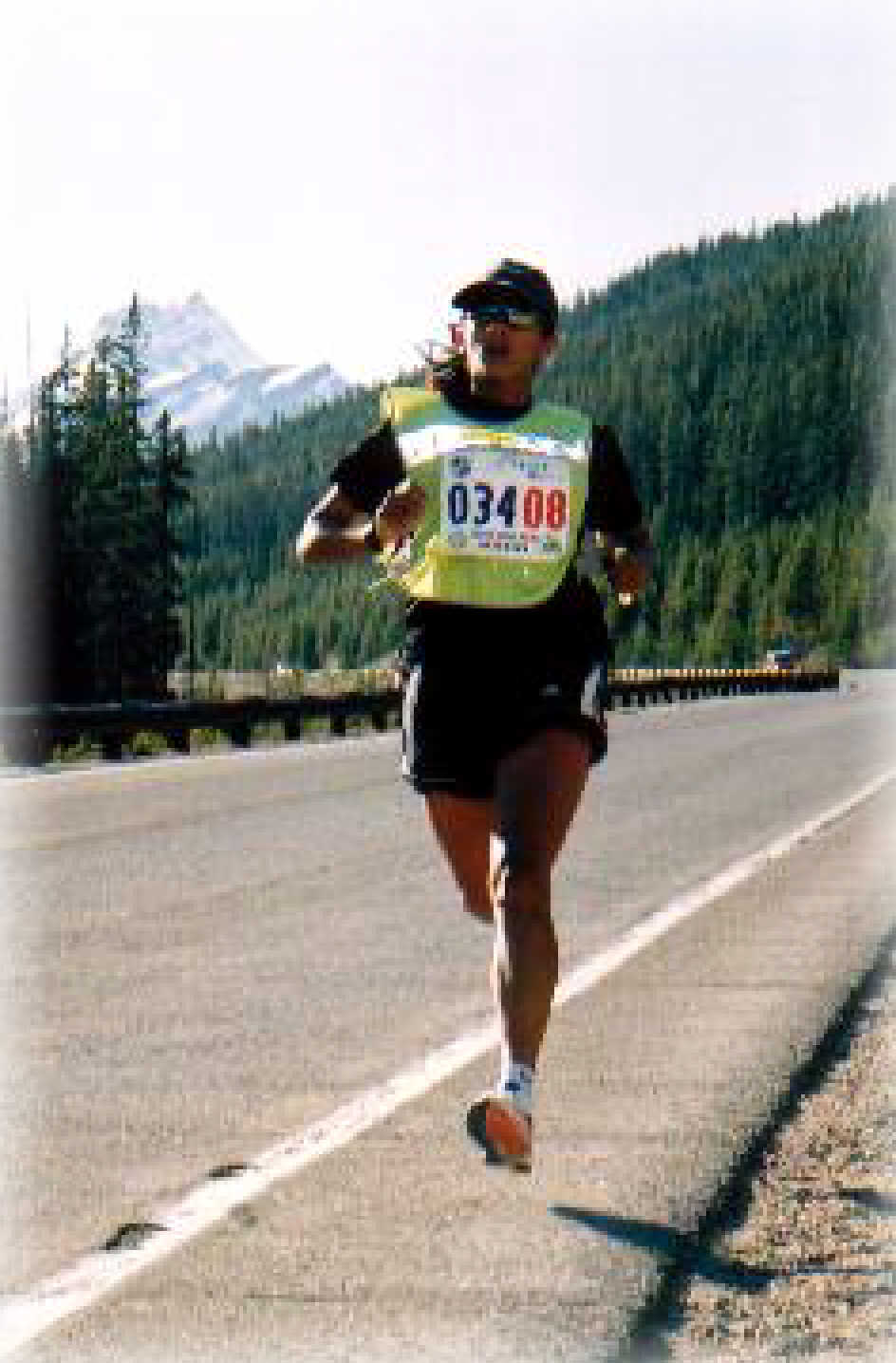| MENU |

The most common symptoms are calf-muscle soreness with discomfort
along the border of the shinbone. These symptoms will usually disappear by reducing
the training load for a few weeks You may over or under pronate or supinate when
you run. Most runners pronate. You may be wearing incorrect shoes.
Have your footwear checked, your shoes could be worn out or incorrect for your feet. Consider changing your running shoes to a more shock-absorbent pair, run on softer surfaces and seek professional advice. Avoid hills and extremely hard surfaces until the situation improves. Run on different terrain, preferably grass. It'll absorb the shock. You need to strengthen the weaker muscles (shins) and stretch the stronger muscles (calves). To strengthen the shins, run up stairs. Yes, this seems to contradict 'avoid hills'. But steps are built differently than hills. Stand on stairs with your heels out over the edge. Lower your heels as far as they will go and hold for 15 seconds. Slowly raise yourself up on your toes. Repeat as many times as you want. Alternate running on different sides of the road all of the time. Running on the same
slope for long periods of time can cause adverse effects to the ankles and shins. Make
sure that you are always facing the traffic. If you are running on a track, alternate your direction of travel. The term 'shin splints' has been replaced by the terms: medial tibial stress syndrome, compartment
syndrome and stress fracture. This is because pain in the shin area may be related to three different causes. Medial Shin Splints This is now referred to as medial tibial stress syndrome (MTSS).
Pain is located at the medial aspect of the leg, adjacent to the medial tibia. A bone scan may show a stress fracture. With medial shin splints, the tenderness
extends along a vertical distance of the tibia. What needs to be done? The most cases the blame can be placed on overtraining, reduce the training.
Evaluate your running program to determine if you have made any training errors. Running on a slanted surface, such as the side of a road, or on a track can place the upper
leg in a position to develop this problem. Anterior Compartment Syndrome It is caused by the muscles swelling within a closed compartment with the result
being an increase in pressure in the compartment. It is vital to seek evaluation and
treatment, if this is suspected. Anterior Shin Splints This is a medical term that has pretty much disappeared. Runner's At Risk for Anterior Shin Splints The usual runners at risk for anterior shin splints are beginning runners. Runners who have not acclimatized to the stresses of running. Runners with a poor choice of shoes and running surfaces (i.e. concrete). Runners overtraining. Runners doing too much downhill running will make the situation worse on the anterior muscles. Runners training with repetitive impact on hard surfaces. Runners with excessive pronation. Solutions The key factors are: Work on decreasing the imbalance between the posterior and anterior muscles. Avoid running on concrete or other hard surfaces Check for Overtraining Decrease training immediately. Do not run if pain occurs during or following your run. Review your stretching. The posterior muscles should be gently stretched along with the stretching of the calf muscles and the hamstrings. Shoes with too many miles on them should be replaced. Check for proper shoes (cushioning). Shock absorption should be a factor in selecting shoes in a runner suffering with anterior shin splints. Downhill running can aggravate this problem and should be avoided. Too long a stride can also delay healing. After exercise icing can lessen symptoms. © Women in Motion -September 1.2000
Page Updated September 1.2000. |






